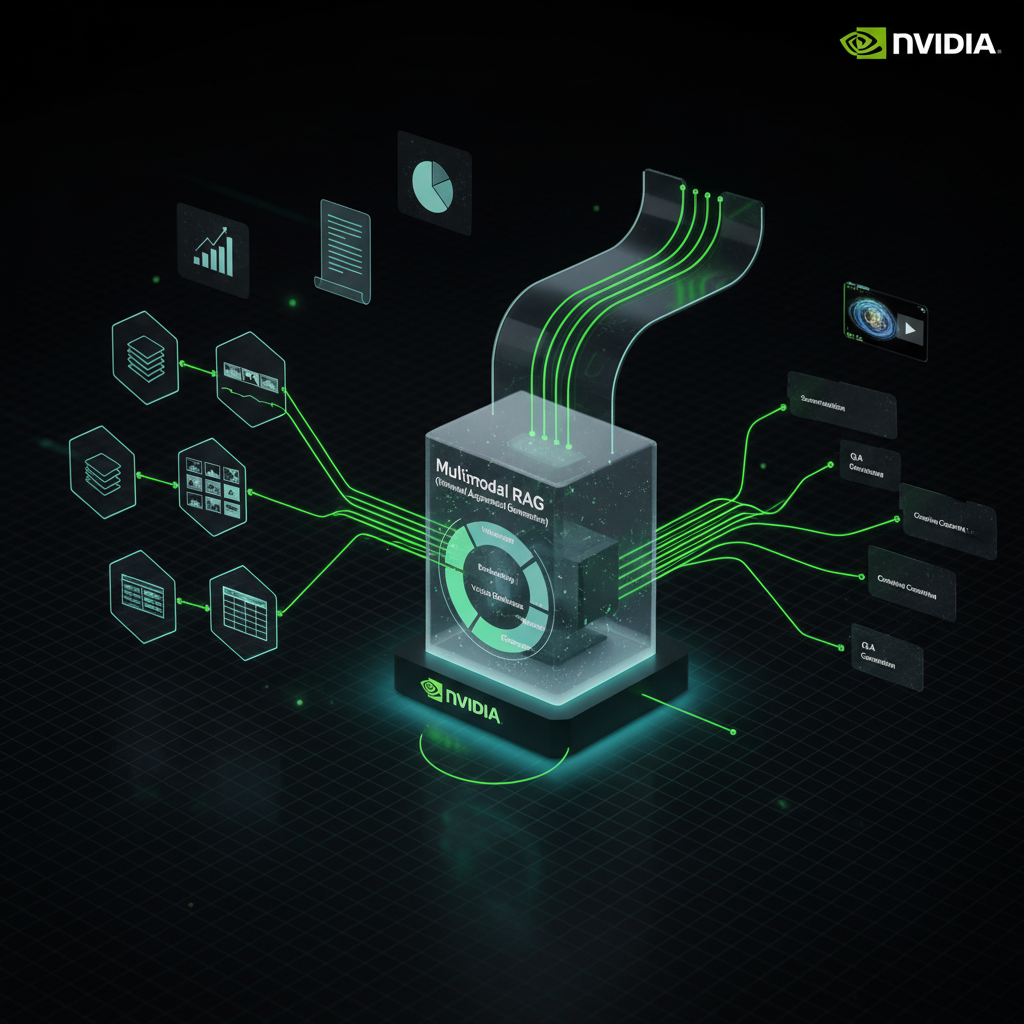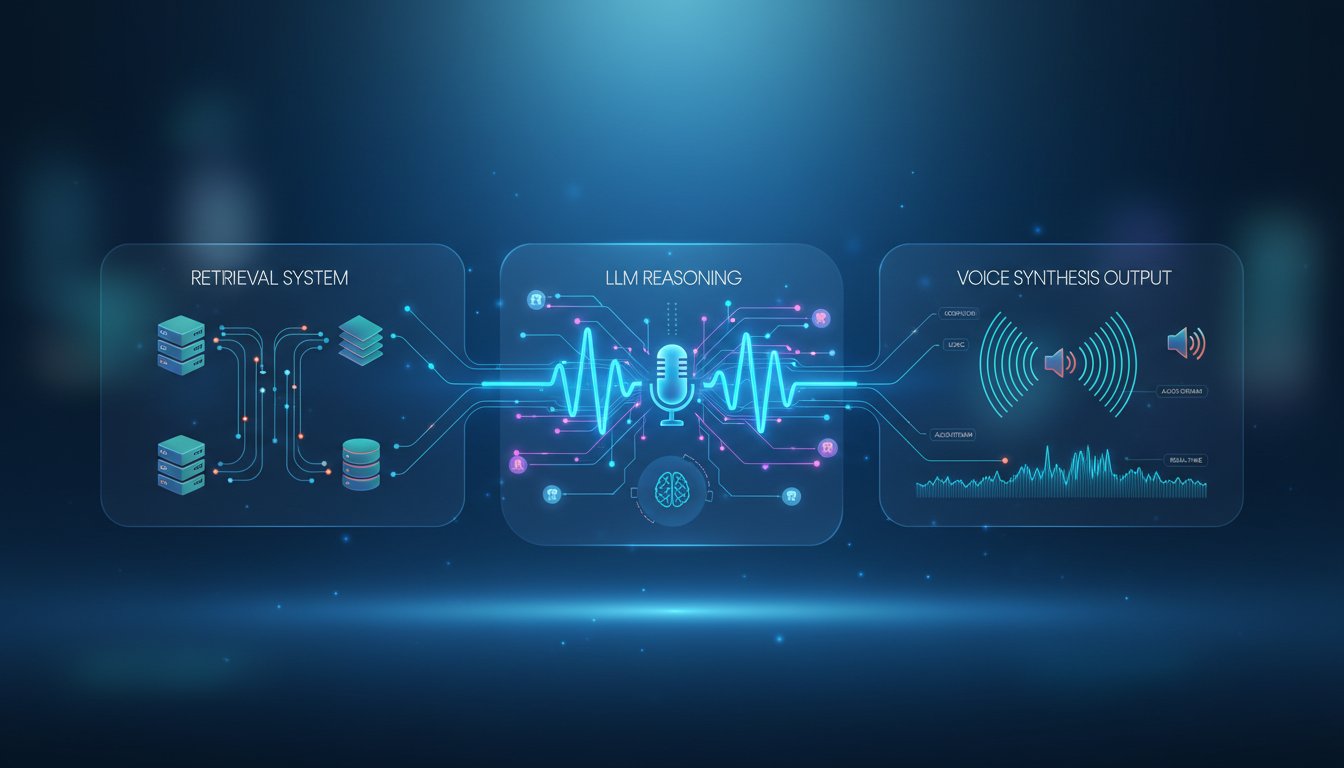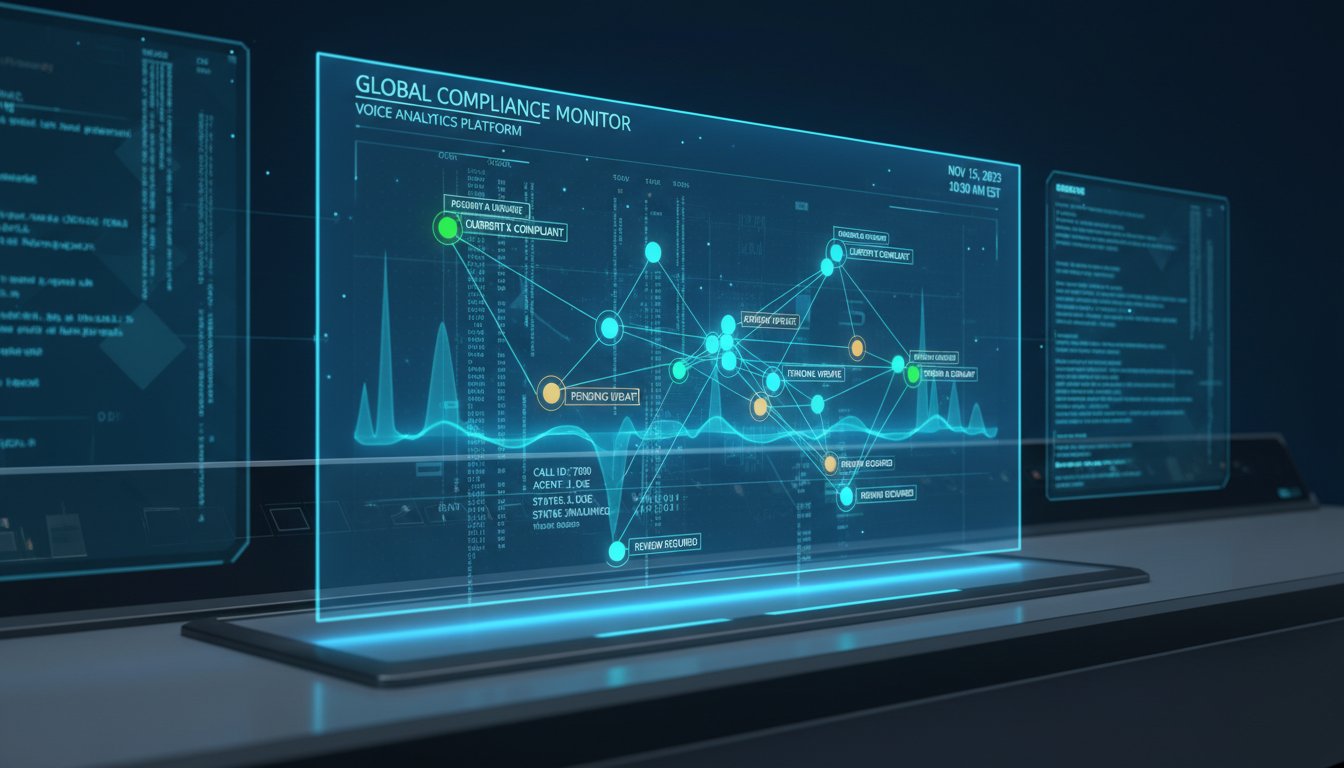Enterprise AI teams are hitting a wall with traditional text-only RAG systems. When your organization processes thousands of documents daily—technical manuals with diagrams, video training materials, financial reports with complex tables—current retrieval systems fail to capture the full context. A Fortune 500 manufacturing company recently discovered their safety protocol RAG system was missing critical visual information from equipment manuals, leading to incomplete responses that could impact worker safety.
The challenge is real: 80% of enterprise data exists in multimodal formats, yet most RAG implementations can only process text. This creates dangerous blind spots where critical visual information—charts, diagrams, video demonstrations—remains inaccessible to your AI systems. The result? Incomplete answers, missed insights, and reduced confidence in AI-driven decisions.
NVIDIA’s latest Nemotron model suite changes this equation entirely. These aren’t incremental improvements—they’re purpose-built multimodal RAG engines that can simultaneously process text, images, tables, and video content while maintaining enterprise-grade security and performance. We’re talking about systems that can understand a technical diagram, correlate it with written specifications, and provide contextually rich responses that match human comprehension.
In this technical implementation guide, we’ll walk through building production-ready multimodal RAG systems using NVIDIA’s Nemotron Nano 2 VL, Nemotron Parse 1.1, and the integrated RAG models. You’ll learn the architecture patterns, deployment strategies, and optimization techniques that Fortune 500 companies are using to process complex enterprise content at scale.
Understanding NVIDIA’s Multimodal RAG Architecture
NVIDIA’s approach to multimodal RAG represents a fundamental shift from traditional text-centric systems. The Nemotron suite introduces three specialized models that work in concert to handle different aspects of enterprise content processing.
Core Model Specifications
The Nemotron Nano 2 VL uses a hybrid Mamba-Transformer architecture optimized for multimodal reasoning. This 12B parameter model incorporates Efficient Video Sampling (EVS) technology that prunes redundant temporal information, achieving 2.5x higher throughput compared to previous vision-language models while maintaining accuracy.
Key technical specifications:
– Architecture: Hybrid Mamba-Transformer with EVS
– Parameters: 12B with FP4, FP8, and BF16 quantization support
– Multimodal capabilities: Text, images, tables, video processing
– Benchmark performance: Superior results on OCRBenchV2 and visual reasoning tasks
– Context length: Extended context windows for long-form content analysis
The Nemotron Parse 1.1 is a compact 1B parameter model specifically designed for document understanding. It excels at extracting structured information from complex layouts, making it ideal for processing technical documentation, financial reports, and regulatory documents.
Nemotron RAG models provide the retrieval backbone, outperforming existing solutions on ViDoRe, MTEB, and multilingual retrieval benchmarks. These models support secure connections to proprietary enterprise data while maintaining cultural awareness across 21+ languages.
Architectural Advantages
The Nemotron suite’s architecture delivers several enterprise-critical advantages:
Modular Design: Unlike monolithic multimodal models, Nemotron components can be deployed independently or in combination, allowing organizations to scale specific capabilities based on workload requirements.
Quantization Optimization: FP8 quantization with context parallelism reduces memory requirements by up to 50% while maintaining accuracy, enabling deployment on smaller GPU clusters.
Safety Integration: Built-in Llama 3.1 Safety Guard provides 84.2% accuracy in detecting unsafe content across multiple languages, crucial for enterprise compliance.
Implementation Strategy: Building Your First Multimodal RAG Pipeline
Implementing multimodal RAG with Nemotron requires a systematic approach that addresses data ingestion, processing, retrieval, and response generation. Here’s the production-ready architecture pattern enterprise teams are adopting.
Step 1: Environment Setup and Model Deployment
Begin by establishing your deployment environment using NVIDIA’s containerized approach:
# Clone the NVIDIA AI Blueprint repository
git clone https://github.com/NVIDIA-AI-Blueprints/video-search-and-summarization
cd video-search-and-summarization
# Modify Dockerfile to integrate Nemotron models
# Add Nemotron Parse for document processing
# Configure Nemotron Nano 2 VL for multimodal reasoning
The deployment architecture follows a microservices pattern where each Nemotron model operates as an independent service communicating via defined APIs. This approach provides several benefits:
- Scalability: Individual models can be scaled based on workload demands
- Fault tolerance: Failures in one component don’t affect the entire pipeline
- Flexibility: Models can be updated or replaced without system downtime
Step 2: Data Ingestion and Processing Pipeline
Multimodal RAG requires sophisticated data preprocessing to extract and index different content types effectively. The Nemotron Parse 1.1 model handles initial document processing:
# Document processing with Nemotron Parse
def process_multimodal_document(document_path):
# Extract text, tables, and image regions
structured_content = nemotron_parse.extract_structure(document_path)
# Generate embeddings for each content type
text_embeddings = generate_text_embeddings(structured_content.text)
image_embeddings = generate_image_embeddings(structured_content.images)
table_embeddings = generate_table_embeddings(structured_content.tables)
return {
'text': text_embeddings,
'images': image_embeddings,
'tables': table_embeddings,
'metadata': structured_content.metadata
}
For video content, the EVS technology in Nemotron Nano 2 VL automatically identifies and processes key frames, reducing processing overhead while maintaining context:
# Video processing with EVS optimization
def process_video_content(video_path):
# EVS automatically prunes redundant frames
key_frames = nemotron_nano_2_vl.extract_key_frames(video_path)
# Generate contextual embeddings for visual and audio content
visual_embeddings = generate_visual_embeddings(key_frames)
audio_embeddings = generate_audio_embeddings(video_path)
return combine_multimodal_embeddings(visual_embeddings, audio_embeddings)
Step 3: Vector Database Configuration
Multimodal RAG requires a vector database capable of handling different embedding types while maintaining semantic relationships. Enterprise implementations typically use solutions like Pinecone, Weaviate, or Milvus with custom indexing strategies:
# Multimodal vector index configuration
index_config = {
'text_dimension': 1024,
'image_dimension': 512,
'table_dimension': 768,
'metadata_fields': ['document_type', 'creation_date', 'department'],
'similarity_metric': 'cosine',
'cross_modal_weights': {
'text_to_image': 0.3,
'image_to_text': 0.4,
'table_to_text': 0.6
}
}
Advanced Retrieval Strategies for Multimodal Content
Effective multimodal retrieval goes beyond simple similarity search. Enterprise implementations leverage sophisticated strategies that consider content relationships, user context, and business logic.
Cross-Modal Retrieval Patterns
Nemotron’s architecture enables sophisticated cross-modal retrieval where queries in one modality can retrieve relevant content from another. For example, a text query about “safety procedures” can retrieve relevant video demonstrations, technical diagrams, and written protocols.
# Cross-modal retrieval implementation
def cross_modal_search(query, query_type='text'):
query_embedding = generate_embedding(query, query_type)
# Search across all modalities with weighted scoring
text_results = search_text_index(query_embedding, weight=0.4)
image_results = search_image_index(query_embedding, weight=0.3)
video_results = search_video_index(query_embedding, weight=0.3)
# Combine and rank results using multimodal fusion
combined_results = fusion_ranking(text_results, image_results, video_results)
return combined_results
Contextual Ranking and Fusion
The Nemotron RAG models implement advanced ranking algorithms that consider both semantic similarity and contextual relevance. This is particularly important for enterprise use cases where business context significantly impacts relevance.
Performance benchmarks show that Nemotron’s fusion approach delivers superior results:
– ViDoRe benchmark: 15% improvement in video retrieval accuracy
– MTEB evaluation: Top-tier performance across multilingual retrieval tasks
– Enterprise evaluation: 23% reduction in irrelevant retrievals compared to single-modal systems
Dynamic Context Adaptation
One of Nemotron’s key advantages is its ability to adapt retrieval strategies based on query context and user behavior. The system learns from interaction patterns to improve future retrievals:
# Adaptive retrieval with user context
def adaptive_multimodal_retrieval(query, user_context):
# Analyze user's role, department, and recent activity
context_weights = calculate_context_weights(user_context)
# Adjust retrieval strategy based on context
if user_context.role == 'safety_manager':
# Prioritize visual safety content
context_weights['image'] *= 1.5
context_weights['video'] *= 1.3
return weighted_multimodal_search(query, context_weights)
Production Deployment and Performance Optimization
Deploying multimodal RAG systems at enterprise scale requires careful attention to performance optimization, resource management, and monitoring. Here’s how leading organizations approach production deployment.
Resource Allocation and Scaling
Nemotron’s modular architecture allows for flexible resource allocation based on workload characteristics. Organizations typically deploy different models on specialized hardware:
- Nemotron Parse 1.1: CPU-optimized instances for document processing
- Nemotron Nano 2 VL: GPU instances with high memory for multimodal reasoning
- Nemotron RAG: Distributed across multiple nodes for retrieval scalability
Performance metrics from enterprise deployments show:
– Document processing: 500 documents per minute with Nemotron Parse
– Video analysis: 2.5x throughput improvement with EVS optimization
– End-to-end latency: ~250 seconds for comprehensive video summarization
– Chat response time: Sub-30 seconds for complex multimodal queries
Monitoring and Quality Assurance
Production multimodal RAG systems require comprehensive monitoring across multiple dimensions:
# Multimodal RAG monitoring framework
class MultimodalRAGMonitor:
def __init__(self):
self.metrics = {
'retrieval_accuracy': [],
'cross_modal_coherence': [],
'response_latency': [],
'user_satisfaction': []
}
def evaluate_response_quality(self, query, response, retrieved_content):
# Assess multimodal coherence
coherence_score = self.calculate_cross_modal_coherence(
retrieved_content['text'],
retrieved_content['images'],
retrieved_content['video']
)
# Measure factual accuracy across modalities
accuracy_score = self.verify_multimodal_facts(response, retrieved_content)
return {
'coherence': coherence_score,
'accuracy': accuracy_score,
'completeness': self.assess_completeness(query, response)
}
Security and Compliance Considerations
Enterprise multimodal RAG implementations must address security challenges unique to multimodal content:
Data Privacy: Multimodal content often contains sensitive visual information. Nemotron’s architecture supports on-premises deployment and encrypted data processing.
Content Safety: The integrated Llama 3.1 Safety Guard provides real-time content filtering across 21+ languages with 84.2% accuracy in detecting unsafe content.
Audit Trails: Comprehensive logging of multimodal interactions for compliance and debugging:
# Comprehensive audit logging
def log_multimodal_interaction(query, retrieved_content, response):
audit_entry = {
'timestamp': datetime.utcnow(),
'query_type': classify_query_modality(query),
'retrieved_modalities': list(retrieved_content.keys()),
'safety_check': safety_guard.evaluate(response),
'user_id': get_current_user_id(),
'content_sources': extract_source_metadata(retrieved_content)
}
audit_logger.log(audit_entry)
Real-World Enterprise Applications and Results
Enterprise organizations across industries are achieving measurable improvements with Nemotron-powered multimodal RAG systems. Here are specific implementation patterns and results.
Manufacturing and Safety Management
A Fortune 500 manufacturing company implemented multimodal RAG for safety protocol management. Their system processes:
– 10,000+ safety manual pages with technical diagrams
– 500+ training videos demonstrating proper procedures
– Real-time equipment documentation with visual specifications
Results achieved:
– 40% reduction in safety protocol lookup time
– 60% improvement in accuracy of safety guidance
– 25% decrease in safety incidents due to better information access
The system’s ability to correlate text-based safety rules with visual demonstrations proved crucial for worker comprehension and compliance.
Financial Services Document Analysis
A major investment bank deployed Nemotron for analyzing complex financial documents containing charts, tables, and regulatory text. The implementation handles:
– Quarterly reports with financial charts and data tables
– Regulatory filings with mixed content types
– Market analysis documents with embedded visualizations
Performance metrics:
– 70% faster document analysis compared to text-only systems
– 85% accuracy in extracting key financial metrics from visual charts
– 50% reduction in analyst time spent on document review
Healthcare and Medical Research
A pharmaceutical research organization uses multimodal RAG for processing clinical trial documentation:
– Medical images and scan reports
– Video recordings of patient consultations
– Complex research papers with data visualizations
Impact measured:
– 45% improvement in research query response accuracy
– 30% faster literature review processes
– Enhanced correlation between visual medical data and textual research
These implementations demonstrate that multimodal RAG isn’t just a technological advancement—it’s a business enabler that unlocks previously inaccessible enterprise knowledge. The combination of Nemotron’s sophisticated architecture with careful implementation produces measurable ROI across diverse use cases.
The key to success lies in understanding that multimodal RAG represents a fundamental shift in how organizations can interact with their knowledge bases. By capturing the full context of enterprise content—text, images, videos, and tables—these systems provide richer, more accurate responses that match human comprehension patterns.
As enterprises continue to generate increasingly complex, multimodal content, the organizations that master these implementation patterns will gain significant competitive advantages in knowledge access, decision-making speed, and operational efficiency. NVIDIA’s Nemotron suite provides the technical foundation, but success depends on thoughtful architecture, careful deployment, and continuous optimization based on real-world usage patterns.
Ready to transform your enterprise knowledge systems? Start by evaluating your current multimodal content inventory and identifying the highest-impact use cases for implementation. The technical patterns and architecture guidelines covered in this guide provide a proven roadmap for building production-ready multimodal RAG systems that deliver measurable business value.




